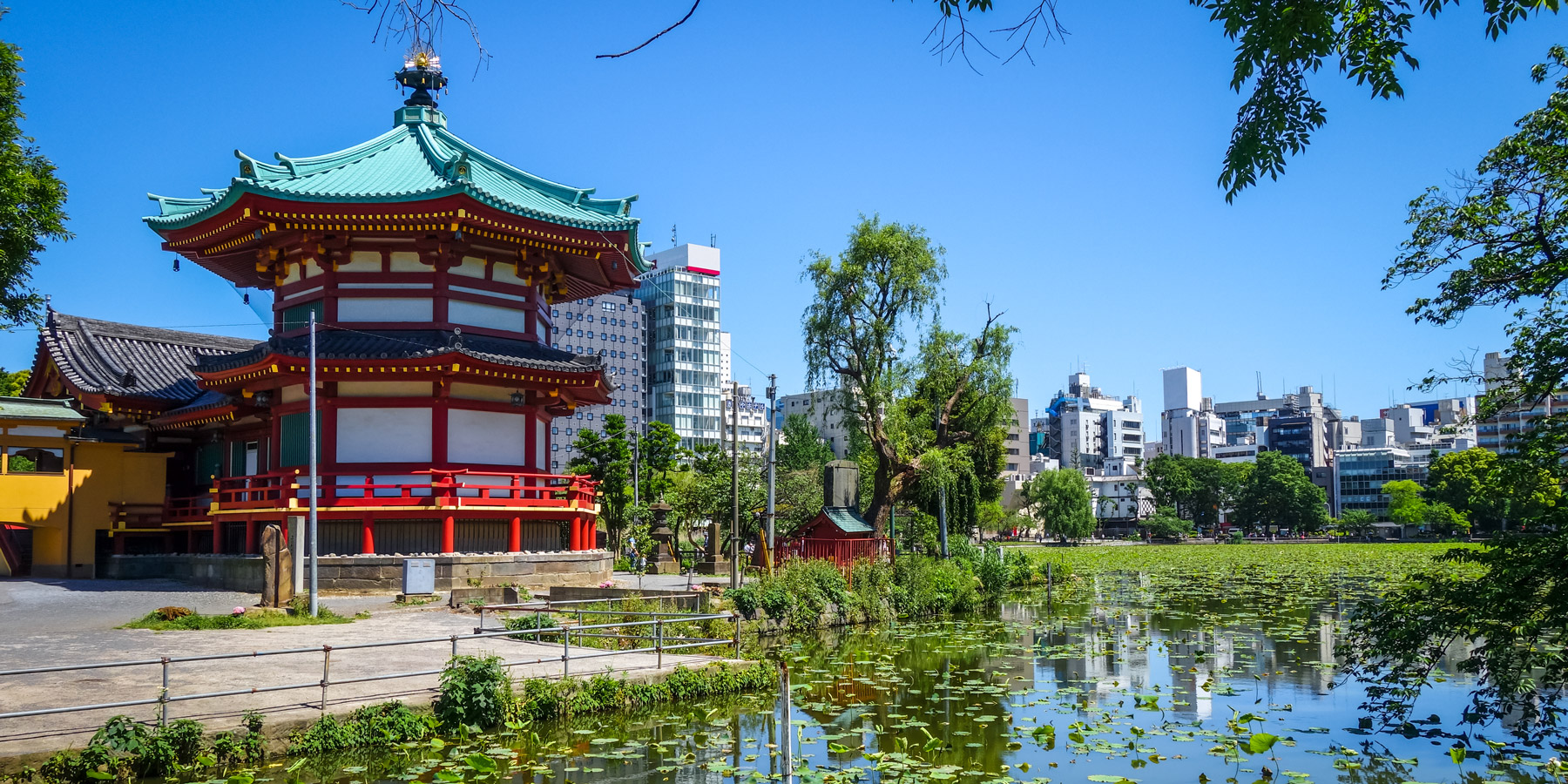
Sanctuaire Asakusa

This point of interest is available as audio on the tour: Visit Tokyo, Where tradition meets modernity
Unlike the Senso-ji Temple, this site is a Shinto shrine. To distinguish them, temples such as Senso-ji belong to the Buddhist faith, while shrines are part of Shinto. Built in 1649, only a few like this one survived the war—making it a rare and authentic example of Edo-period architecture. For this reason, it was listed as an Important Cultural Property in 1951. Also known as the Shrine of the Three Deities, it was apparently built to honour the three men who founded Senso-ji Temple in the 7th century. Legend says that it all began when two fishermen, who were casting their nets into the Sumida River just a few steps from here, found a statue of the Buddhist goddess of compassion, Kannon. When the village chief heard the news, he immediately started to worship her and converted to Buddhism, just like the two brothers who had found the statue. The Senso-ji temple was built in her honour by a Buddhist priest who, moved by the tale, hid the sacred statue inside once it was finished. It is said he was instructed while he was dreaming to hide the statue in a temple, which he certainly did, and as a result, the statue still remains enshrined inside to this day. Even though there isn’t much left of the original temple due to the war, this shrine has really gone through it all to be here today, standing proudly in its vibrant glory. It was built to honour the three men mentioned before, as a gesture of gratitude for their conversion and dedication to the oldest temple in Tokyo today. It was none other than Tokugawa Iemitsu, the third shogun of the Tokugawa dynasty, who commissioned the construction of the shrine in 1649, elevating the three founders to the status of deities. Here, the shrine also hosts one of Tokyo’s three greatest Shinto festivals—the Sanja Matsuri—a spectacular celebration honoring these three legendary figures with processions, music, and traditional dances.

Discover other tours to visit Tokyo

Discover Tokyo with app
An interactive guide through the most beautiful streets, squares, and districts
19 fun audioguides full of historical facts, anecdotes, and legends






Comments